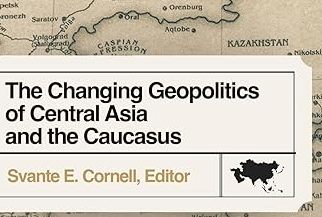Wednesday, 18 June 2003
A FAILED COUP AFTER ALL? NOVEMBER 2002, ASGHABAT
By Annette Bohr (6/18/2003 issue of the CACI Analyst)
BACKGROUND: According to official reports, President Niyazov\'s motorcade was fired upon at about 7 a.m. in downtown Ashgabat as he was traveling to his office from his residence in Arshabil, 28 kilometers outside the capital.
Wednesday, 18 June 2003
CHINESE BUSINESS INTERESTS IN CENTRAL ASIA: A QUEST FOR DOMINANCE
By Niklas Swanström (6/18/2003 issue of the CACI Analyst)
BACKGROUND: The Chinese government has made it a policy to aggressively improve trade relations with the Central Asian states, and not only in the prioritized areas of oil, gas and grain, but also for small and medium sized companies. Both Chinese Premier Zhu Rongji and Chinese President Hu Jintao have emphasized the strategic importance of the ancient Silk Road for China’s economic development and stability. Trade has earlier focused on commodities such as steel, cotton, food, etc, but in recent years border trade has begun to focus to a higher degree on machinery, electronic products, and high tech development as well as large investment projects in the agricultural sector and the oil/gas industry.
Wednesday, 04 June 2003
TURKMENBASHI\'S GAS GAMES: GAS FOR POWER?
By James Purcell Smith (6/4/2003 issue of the CACI Analyst)
BACKGROUND: Since the early years of its independence, Turkmenistan\'s President Saparmurad Niyazov has been coming up with a number of gas pipeline projects, with the aim to boost its gas exports bypassing the Northern route through Russia. The Turkmen president spent days and weeks of talks with heads of states and other officials, discussing numerous gas pipeline projects. A shortlist includes the Turkmenistan-Iran-Turkey option, the Turkmenistan-Uzbekistan-Kazakhstan-China-Japan, the Trans-Caspian Turkmenistan-Azerbaijan-Georgia-Turkey, and the last, widely discussed project, Turkmenistan-Afghanistan-Pakistan with possible extension to India.
Wednesday, 04 June 2003
THE MOSCOW SUMMIT: TEMPERED HOPE FOR THE SCO
By Matthew Oresman (6/4/2003 issue of the CACI Analyst)
BACKGROUND: The Shanghai Forum (as it was originally known before the addition of Uzbekistan in 2001) was founded in 1996 by China, Russia, Kyrgyzstan, Kazakhstan, and Tajikistan to simultaneously demarcate and demilitarize the new border between China and the new post-Soviet republics, as well as to introduce confidence-building measures. Since then, the organization has attempted to move beyond its ad hoc talk shop status to address new and pressing issues, particularly the continuing terrorist threat in the region and the need for economic integration. These plans have continuously faltered, especially the creation of an SCO counterterrorism center in Bishkek in 1999.


 Silk Road Paper S. Frederick Starr,
Silk Road Paper S. Frederick Starr,  Book Svante E. Cornell, ed., "
Book Svante E. Cornell, ed., "